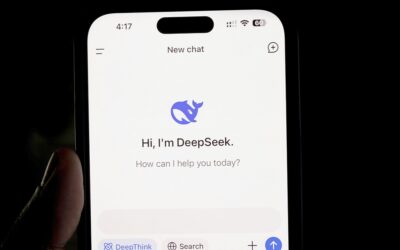Gartner predicts there will be 25 billion connected ‘things’ by the year 2020. While IoT is already being used in the industrial world, many businesses are still hesitant to adopt this technology. What is holding them back? How should they prepare their infrastructure for connected ‘things’?
DIGITAL CREED met Ganesh Ramamoorthy, Research VP, Gartner at the IT Infrastructure, Operations and Data Center Summit, earlier this month (May ‘16) in Mumbai.
We asked Ganesh about the level of preparedness from industry and organizational levels.
Ganesh advises businesses how to implement IoT and how to prioritize IoT implementation projects. He also helps formulate IoT go-to-market strategy for technology service providers and is an expert on the emerging IoT market landscape for technology providers and end users.
Q. How should IT decision makers plan for, and go about implementing IoT?
Ganesh: It starts with identifying the business challenges. Some challenges can be overcome with IoT. Any other approach will see companies investing a lot and not seeing any results. If I am able to fix something and reduce costs, that’s a business result. If it improves efficiency or optimizes some process, that’s a business result.
Doing an IoT project just because it does something better, is questionable – unless it translates into something tangible for the business.
Companies should understand that IoT is a business initiative – it is not just about technology. So they have to focus on business outcomes and try to understand what challenges they are trying to solve with the help of IoT.
Q. Studies show that the number one factor holding back organizations from implementing IoT is security. Gartner has also warned that IoT sprawl is going to cost 20 percent of security budgets. So what is the industry doing about it?
Ganesh: This should be viewed from three levels. First, all these devices will certainly require security at the hardware level. Software level security by itself is not sufficient. We are talking about embedded security at the chip level. This involves companies like Infineon Technologies, Intel, ARM Holdings, NXP Semiconductors and others. These companies have proprietary techniques to detect intrusive behaviour and to secure access to their chips.
Chips released in the future are going to be more secure.
Secondly, from the software side, it is about how the user’s devices will be managed from the cloud. So the device management practices are important. The network should be able to automatically recognise (authenticate) and configure the IoT devices coming into the network; and grant these devices access to the network resources.
Thirdly, we need to audit our existing hardware and software and the networking environment – to identify the gaps. IoT will come into brownfield environments. And in such environments we are unaware about the current landscape of these technologies. We do not know what kind of software and hardware exists in brownfield environments.
So we need to do an audit and know where we stand, and then identify where the gaps are, so that we can bring in the necessary technology or safeguard mechanisms. We may probably introduce some new policies and procedures to enforce certain behaviour across the network.
So that gap analysis will create a robust security infrastructure for IoT.
Q. What about privacy issues that might arise? After all, these devices are collecting information about us?
Ganesh: Companies are collecting tons of information about us. And this is private information about you and me. So I have to authorise the use of that information by my service provider for certain activities. If service providers are gathering information about consumers or enterprises using IoT devices, to provide certain services, then they will need to be very transparent. These service providers will need to explicitly mention what data they are collecting, for what purpose, and if they will be sharing this information with other parties.
So users must understand the consequences of sharing personal information with the service provider. In the absence of a transparent mechanism, all the IoT services that you offer will just crumble.
Q. Gartner has predicted there will be 25 billion connected ‘things’ by 2020. And all these ‘things’ will need IP addresses. However, the old IPv4 addressing system is running out of unique IP addresses. We have been talking about standardising IPv6 for years. Where do we stand today?
Ganesh: The IPv6 standard has been around for a while, but it has yet to be ratified by certain bodies like IEEE and others. There are certain technical issues that these bodies need to have a consensus on. The body that provides the namespace and all the IP addresses has still not got the green signal. But the mechanism from a hardware level has already been built to support IPv6. So wider addressing has already been built in and it is only the ratification of the standard that is pending.
EXCLUSIVE










